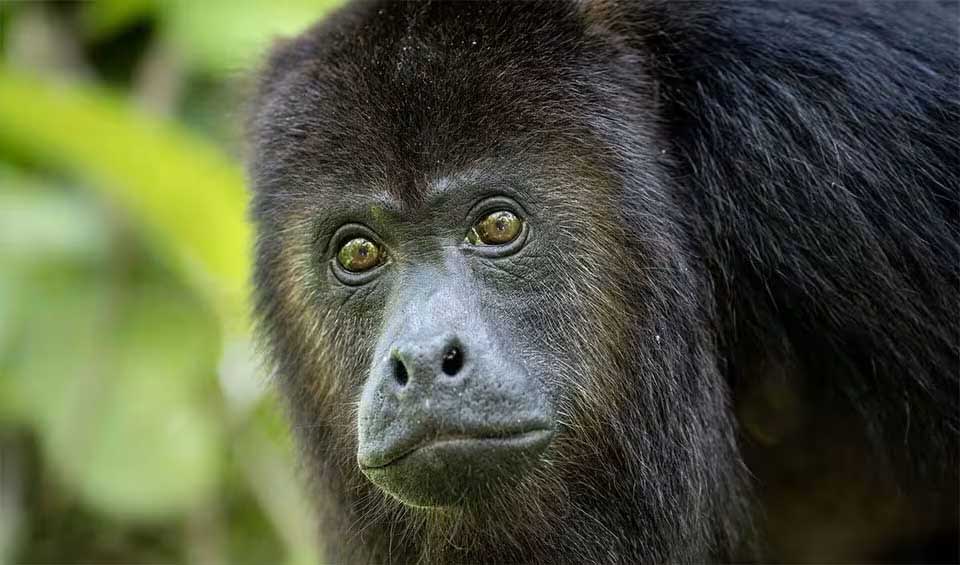One of the most striking features of the Mantled Howler Monkey is its namesake “mantle” of lengthy guard hairs that drape elegantly along both sides of its body, giving it a distinctive appearance among primates. This feature, combined with their robust prehensile tails equipped with a bare pad on the underside near its base, underscores their adaptation to an arboreal lifestyle. The bare pad facilitates a better grip on branches, essentially acting as an extra limb, enabling these monkeys to navigate through the canopy with ease and grace.
The facial features of these monkeys are equally remarkable, with a furless, black-hued face framed by a beard-like growth. This striking contrast adds to their compelling visage, making them one of the more recognizable monkey species in their range. The fur coloration of mature adults, featuring black and brown/blonde saddles, serves as a visual cue for identification, while infants are born with a coat that ranges from silver to golden brown. This infant coloration undergoes a transformation over the first year of life, gradually darkening to match the adult’s distinctive patterning.
Mantled Howler Monkeys are herbivorous, with a diet predominantly consisting of leaves, fruits, and flowers, categorizing them as folivores. This diet is reflective of their role in the forest ecosystem, where they contribute to seed dispersal and the pollination of flowering plants. Their preference for leaves, despite being a less energy-dense food source, highlights their adaptation to a lifestyle that requires efficient digestion of fibrous plant material. The digestive system of the Mantled Howler Monkey is specially adapted to ferment and extract nutrients from leaves, allowing them to thrive on this abundant but challenging food source.
The vocalizations of the Mantled Howler Monkey are perhaps what they are best known for, capable of producing deep, resonant howls that can be heard for miles through the dense forest. These vocalizations serve multiple purposes, including communication within the troop, defining territory boundaries, and signaling the presence of predators. The howls underscore the complex social structures of these primates and their ability to use sound to maintain cohesion and safety within their groups.
Distribution
 Colombia
Colombia Costa Rica
Costa Rica Ecuador
Ecuador Guatemala
Guatemala Honduras
Honduras Mexico
Mexico Nicaragua
Nicaragua Panama
Panama Peru
PeruAnything we've missed?
Help us improve this page by suggesting edits. Glory never dies!
Suggest an editGet to know me
Terrestrial / Aquatic
Altricial / Precocial
Polygamous / Monogamous
Dimorphic (size) / Monomorphic
Active: Diurnal / Nocturnal
Social behavior: Solitary / Pack / Herd / Group
Diet: Carnivore / Herbivore / Omnivore / Piscivorous / Insectivore
Migratory: Yes / No
Domesticated: Yes / No
Dangerous: Yes / No






